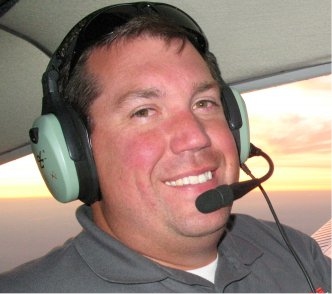What a great deal your customer got on his last annual! He heard of a guy from a friend of a friend of a friend who would come out with a few tools in the back of a truck and do the annual in the T-hangar in just one weekend for only $300! But how good of an annual did your customer really get?
Many flight training providers and instructors provide services for customers who own their own aircraft. In some cases, flight schools also provide maintenance services and may or may not be the provider of maintenance services for other aircraft in which their staff provides flight instruction. When instructors are providing services in aircraft with which they or the onsite maintenance is not familiar, some additional risk factors may be present. Every time instructors get into an aircraft they don’t know, they are taking some level of risk that the maintenance provided on that aircraft isn’t, well, up to par.
Keeping an aircraft “legal” isn’t just about having a signature in the logbook that says an annual was completed by an IA each year. The goal is to really do good inspections and make sure the aircraft are safe for another year.
I’ll call them “pickup truck annuals,” but they could also refer to any shoddy inspections in which corners are cut in the process. I always get a little more nervous when I find out maintenance is not provided in an established business location. The temptation to “make do” with the parts on the back of the truck because it “will make it another year” instead of repairing things properly gets too strong.
Keep instructors safe in unfamiliar aircraft by considering these tips:
- Look at the aircraft logbooks. Many instructors don’t even look at the logbooks to make sure required maintenance is being conducted. It is also worth looking to see if interim maintenance is being conducted and properly documented. When something goes wrong between annual inspections, is the owner having a maintenance shop (A&P or IA) do the work, or is he “fixing things” himself?
- Just the inspection endorsement isn’t enough. Don’t just look to see if an annual signoff was completed within the last year. Look at who did the inspection. Whether it is a reputable shop or a provider with a bad reputation, chances are word has gotten around. If you are unfamiliar with the provider, ask for more information.
- Check the airworthiness directives log. Hopefully there is one, but make sure that the IA who did the last inspection is verifying ADs and their compliance. Most good IAs will create a log in the aircraft records.
- Verify the inspection was actually completed. This doesn’t happen often, but I have seen cases in which the inspection records were forged. Sometimes there are telltale signs, as with old Cherokees whose center yoke medallions must be removed for periodic AD inspection. I once saw an aircraft that had been signed off repeatedly, but the medallions had never been removed. Was a full inspection really being completed? I have even seen a couple cases in which owners forged inspection stickers, using a previous IA’s credentials and doing an “inspection” of their own. If there are any questions, a quick call to the IA can help verify if he actually completed the inspection.
- Avoid the “I fixed it myself” customer. Working on airplanes requires that work be completed by certified individuals. Sure, the owner can perform some tasks, such as changing a tire or the oil, but there are many things he cannot do. Even if the work was done by the owner, the logbooks should have a record of work. When you find an owner who says he is “mechanically inclined” and changed his own cylinders without an A&P or IA working with him, start to get nervous. He may be very capable, but the attitude of not following the rules should make you wonder what other rules he might be breaking.
Making sure an airplane is ready for and safe for flight isn’t something that should be skimped on. A skipped cable inspection may miss a frayed cable that will fail and cause flight control failure. Failure to complete a proper cylinder compression test may miss a cracked cylinder that could leave an instructor and student stranded in a field at best or worse, crashed and injured in a less suitable landing location. These and many other inspection items require proper tooling and attention to detail that takes time and investment by a quality maintenance services provider. It’s less likely that a “bargain” maintenance provider is going to be able to meet these standards.
If you think the maintenance on an aircraft a customer is asking to use for training isn’t up to par, don’t provide services in it. The few dollars you may gain on a couple lessons just aren’t worth the risk. It might be time to politely decline, or, if the customer is willing, recommend a different maintenance provider for future needs. Determining the quality of maintenance that is conducted on unfamiliar aircraft is important for flight training providers for their own instructors’ safety and for the liability of the business that sends out its instructors in the aircraft.

